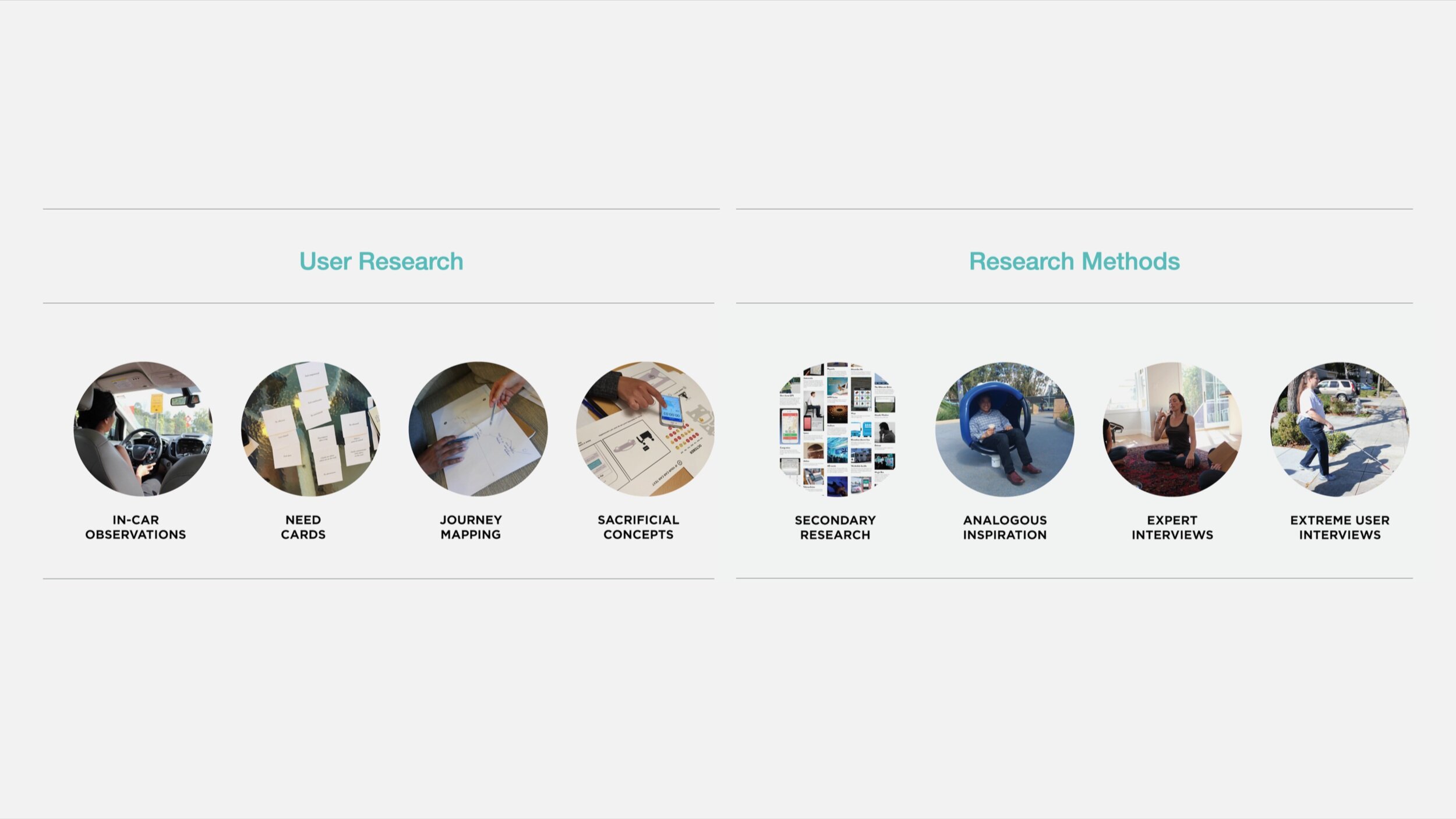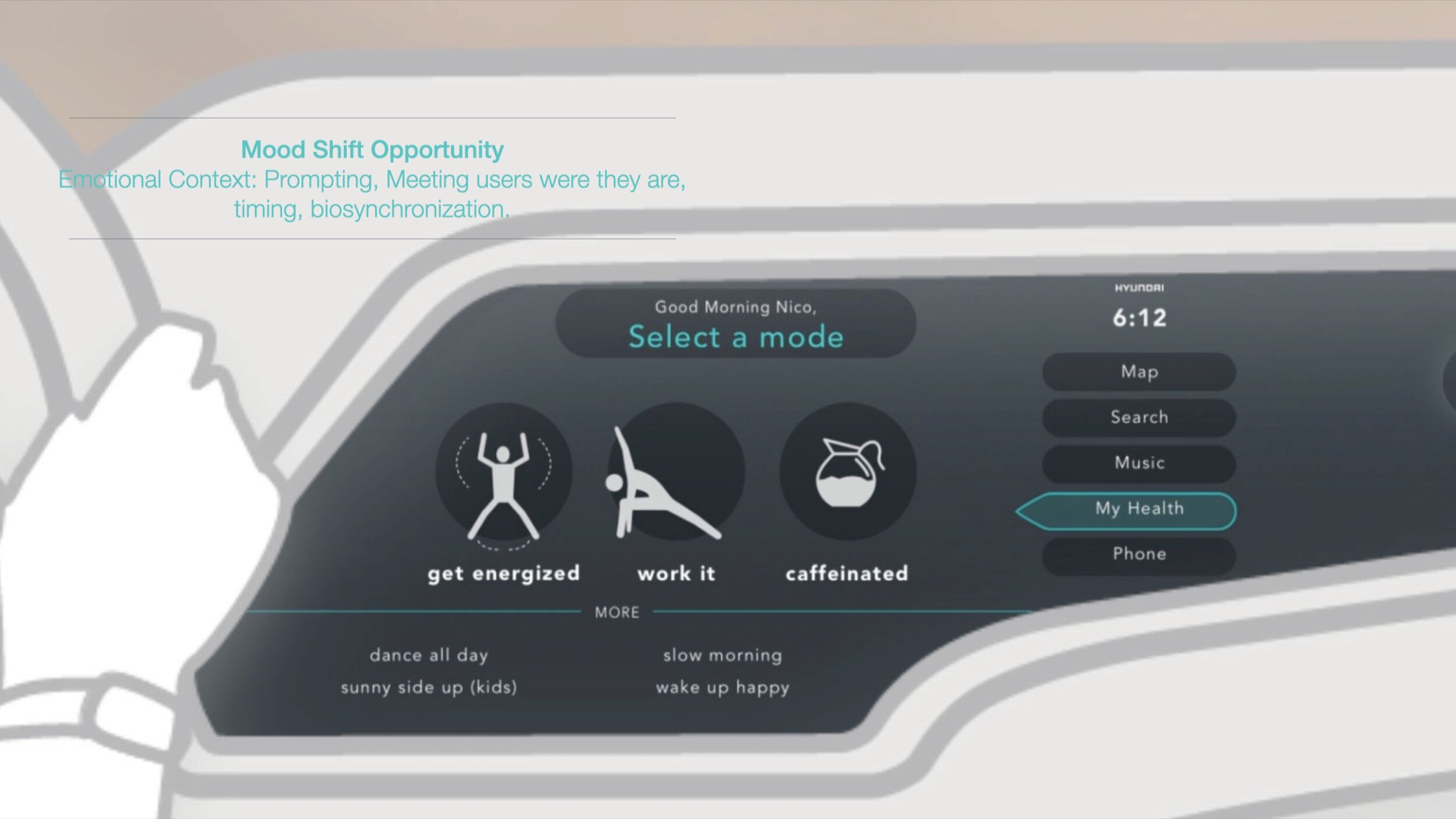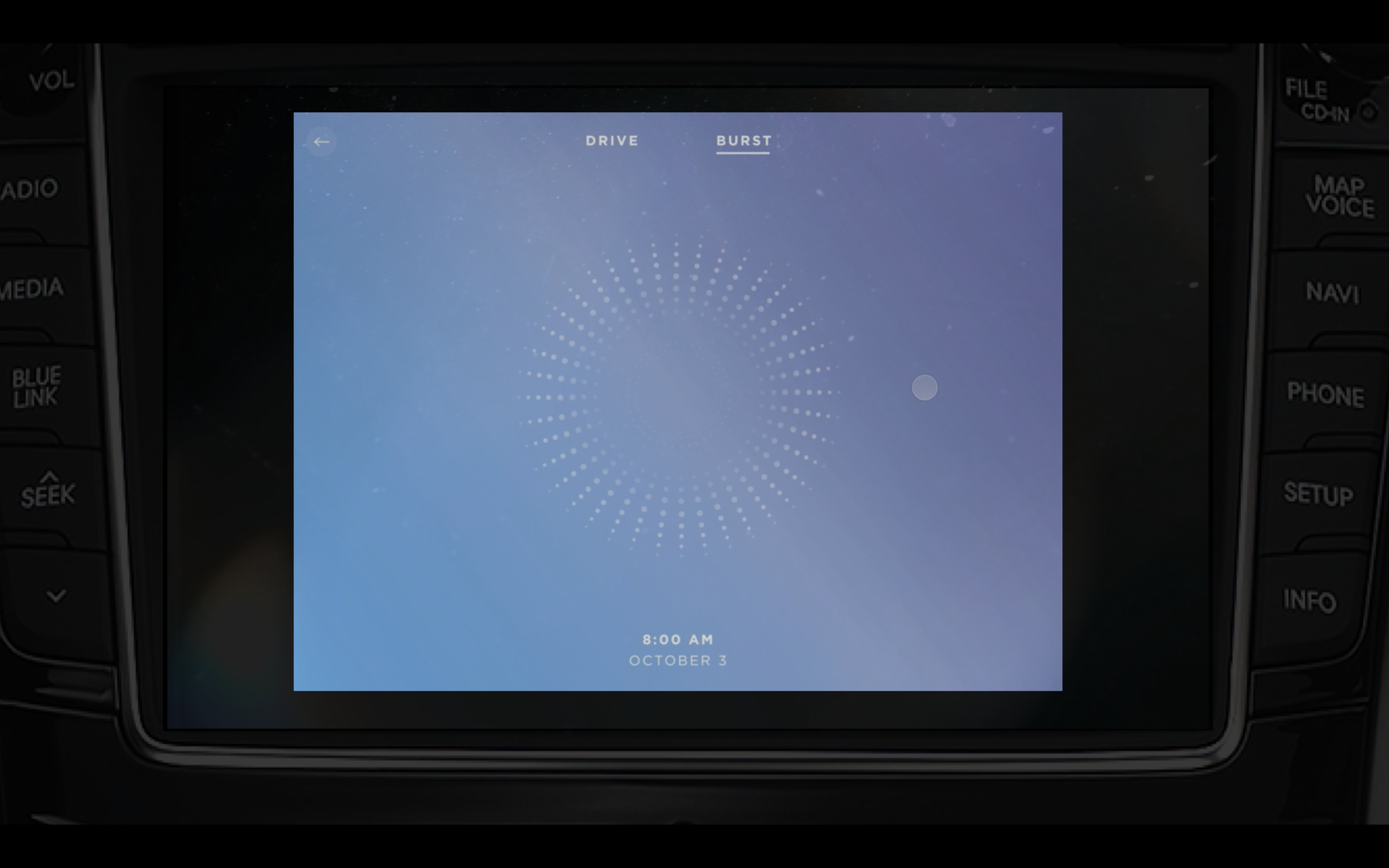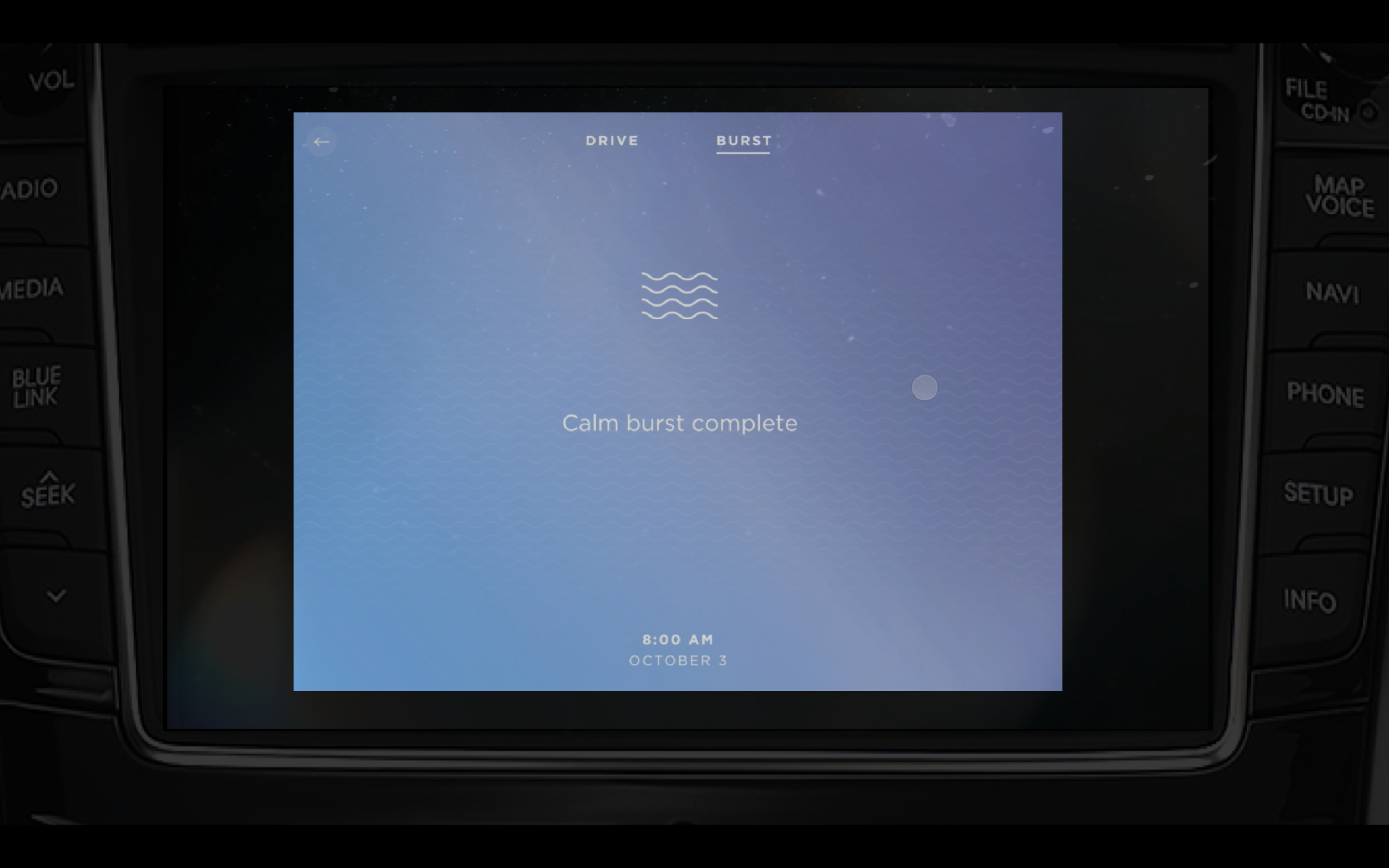Prototyping ‘Mood Bursts’ to Shift the Senses
Micro experiences are delivered through ‘Mood Bursts,’ creating a variety of physical and mental responses. If vehicle sensors detect that a driver is losing concentration, an ‘Alert Burst’ can be triggered to engage them. If sensor data indicates that a driver is in traffic or experiencing elevated stress levels, a ‘Calm Burst’ can be activated to boost their relaxation. Sensory ‘bursts’ create distinct, contrasting moments rather than prolonged environmental change. Mood bursts are personalized, choreographed experiences that combine two or more micro-experiences to create various driver responses, including posture, scent, light, temperature, and sound.
An immersive and multi-sensory virtual reality experience was included Hyundai’s Health + Mobility CES exhibition.
Client Perspective
“For many the daily commute leads to stress, frustration, and the feeling of wasted time. In addition to automating the driving task, technology can also be used to shift a driver’s state of mind by creating conditions that cultivate a safer and healthier mental state, boosting their focus or helping them relax while traveling so that drivers might be less fatigued when arriving at their destination.”

























